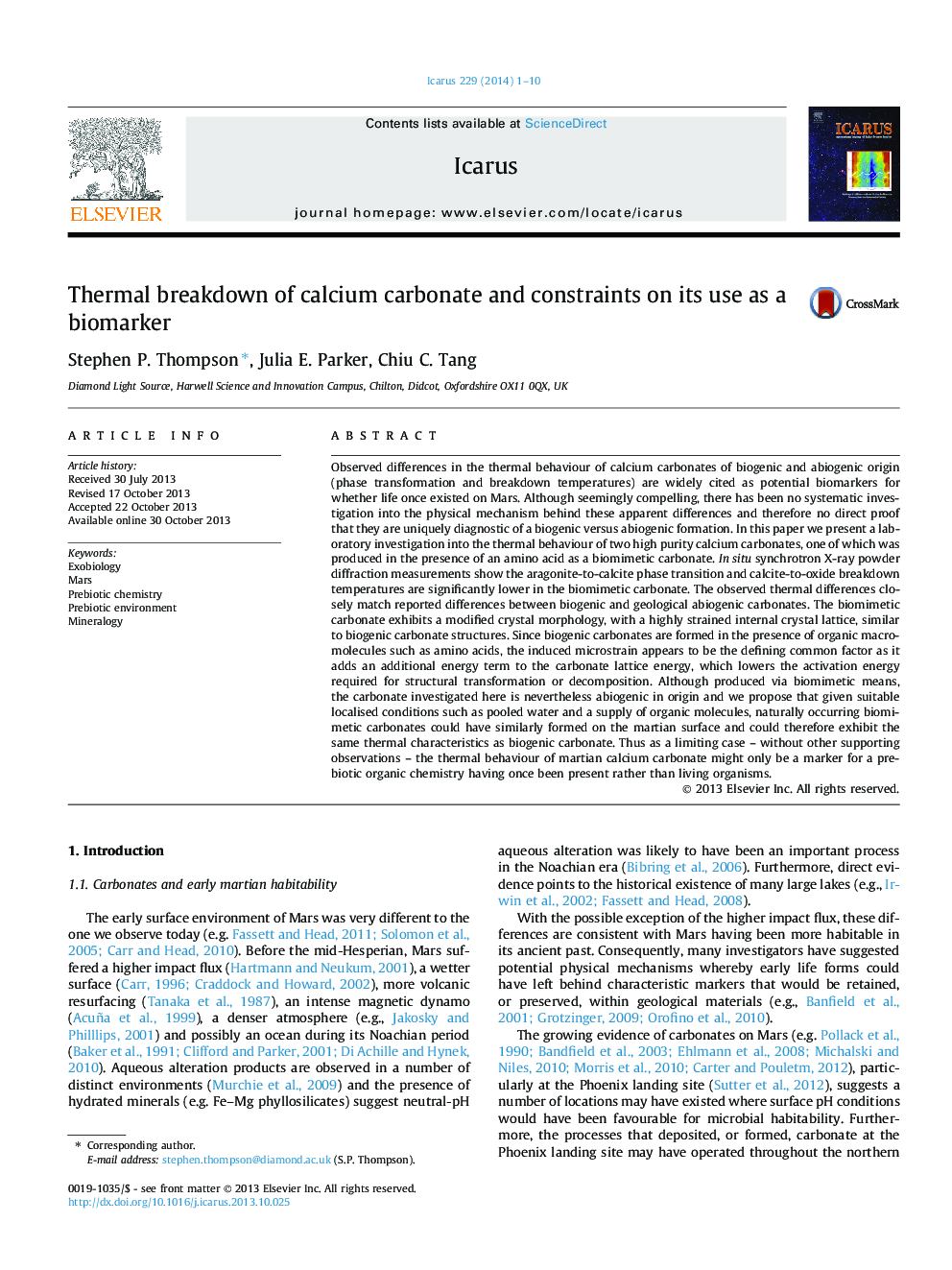| Article ID | Journal | Published Year | Pages | File Type |
|---|---|---|---|---|
| 8138730 | Icarus | 2014 | 10 Pages |
Abstract
Observed differences in the thermal behaviour of calcium carbonates of biogenic and abiogenic origin (phase transformation and breakdown temperatures) are widely cited as potential biomarkers for whether life once existed on Mars. Although seemingly compelling, there has been no systematic investigation into the physical mechanism behind these apparent differences and therefore no direct proof that they are uniquely diagnostic of a biogenic versus abiogenic formation. In this paper we present a laboratory investigation into the thermal behaviour of two high purity calcium carbonates, one of which was produced in the presence of an amino acid as a biomimetic carbonate. In situ synchrotron X-ray powder diffraction measurements show the aragonite-to-calcite phase transition and calcite-to-oxide breakdown temperatures are significantly lower in the biomimetic carbonate. The observed thermal differences closely match reported differences between biogenic and geological abiogenic carbonates. The biomimetic carbonate exhibits a modified crystal morphology, with a highly strained internal crystal lattice, similar to biogenic carbonate structures. Since biogenic carbonates are formed in the presence of organic macromolecules such as amino acids, the induced microstrain appears to be the defining common factor as it adds an additional energy term to the carbonate lattice energy, which lowers the activation energy required for structural transformation or decomposition. Although produced via biomimetic means, the carbonate investigated here is nevertheless abiogenic in origin and we propose that given suitable localised conditions such as pooled water and a supply of organic molecules, naturally occurring biomimetic carbonates could have similarly formed on the martian surface and could therefore exhibit the same thermal characteristics as biogenic carbonate. Thus as a limiting case - without other supporting observations - the thermal behaviour of martian calcium carbonate might only be a marker for a pre-biotic organic chemistry having once been present rather than living organisms.
Related Topics
Physical Sciences and Engineering
Earth and Planetary Sciences
Space and Planetary Science
Authors
Stephen P. Thompson, Julia E. Parker, Chiu C. Tang,
